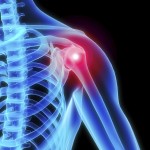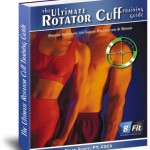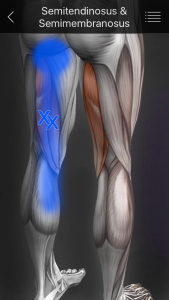Brian Schiff’s Blog
Injury Prevention, Sports Rehab & Performance Training Expert
Many of my clients need to improve shoulder and pillar stability. Combating poor glenohumeral and scapular stability and insufficient trunk stability is a must to reduce injury risk, resolve shoulder and back pain and eliminate compensatory motion with exercise, sport and life.
The following two exercises are “go to” ones I utilize to do just this.
The links above are for two recent exercise columns I authored for PFP Magazine. These exercises include load bearing using the client’s bodyweight and include progressions and regressions.
It is time to clear out some product inventory this year. To that end, I am offering a 50% off sale for one week only. This sale is on all physical products as well as e-books. I am also offering this discount on my printed version of the Ultimate Rotator Cuff Training Guide, of which I only have five remaining copies.
Simply enter code BFIT50 at checkout to save 50% on your entire order. Click Here to view all products.
This sale will end Monday July 18, so act now while supplies last.
Many people suffer from chronic hamstring pain. The question is what is the root source the pain? As a seasoned clinician, I see many patients who present with pain in the upper hamstring/ischial region. Referral sources can include the low back, hip, SI joint, proximal hamstrings, gluteals, piriformis, and ischial bursitis to name a few. In some cases, the pain can be multi-factorial as I see some runners with low level discogenic (nerve) pain and proximal hamstring tendinopathy. The sciatic nerve and its proximity with the hamstrings necessitates thoroughly vetting the symptoms and its pattern in each client. Assessing SLR, slump test, reflexes, myotomes and dermatomes is a must.
Determining what the exact source of can be difficult and requires a good subjective exam and objective testing. For the purposes of this particular post, I am focusing on the proximal hamstrings themselves as the primary source of the pain, as I see so many who struggle with proximal tendinopathy who have seen many providers with little relief.
I treat many runners and middle aged adults who experience this high hamstring or buttock pain that is often worse with:
- Sitting
- Forward bending
- Walking or running uphill
As with traditional hamstring strains, eccentric strengthening is a must for this population. However, we must consider the myofascial component and contributions to this pain as well. In many cases, these patients have ischial tuberosity tenderness. Consider the referral pattern of the medial HS illustrated below:
I typically like to consider using hip and core strengthening, dry needling, IASTM, stretching and eccentric strengthening to address the pain. If I feel the problem may include a sciatic nerve component and there is an extension bias, I will utilize some PA glides and extension exercises too. In addressing this pain pattern, we must be thorough.
A 2014 case study published in JOSPT looked at a case study with two runners (71 and 69 y/o men) who were treated with eccentric exercises, trigger point dry needling and lumbopelvic stability exercises. The rehab was phase based and the results are as follows:
Patient 1 was treated in physical therapy for 9 visits over 8 weeks. At discharge, he had achieved his goal of running 8 to 10 km 5 times each week pain free. An e-mail received 6 months following discharge noted that he had remained symptom free with all activity and that he completed a triathlon symptom free.
Patient 2 was seen in physical therapy for 8 visits over the course of 10 weeks and discharge were performed by the same therapist who performed the initial evaluations and oversaw each treatment. He was discharged after running 30 km without symptoms and reporting significant decrease in hamstring pain. The patient was seen 6 months later in physical therapy for unrelated right shoulder subacromial impingement but reported no hamstring symptoms and that he had participated pain free in a marathon.
In my practice, I have found dry needling, heat and soft tissue work to be very helpful along with stretching and strengthening. I like to use eccentric PREs and hip stability work to resolve proximal hamstring pain. Specifically, I have used the following two exercises with very good results:
Single leg RDL
Supine reverse hamstring curls using gliding discs
Both of these exercises are effective in promoting eccentric hamstring strength, hip stability, and improved hamstring mobility. Furthermore, they can be effectively used in rehab, rehab and training situations. I routinely use them in all of the above. For a more detailed explanation of the reverse curls, be sure to check out my upcoming Functionally Fit column at www.fit-pro.com.
Keep in mind that hamstring pain can be caused by one or multiple sources. It is best to seek a medical evaluation to determine the exact source of pain and address it safely and effectively. Exercises such as the ones demonstrated in this post represent a few options for addressing hamstring strains/tendinopathy. Others may include Nordic hamstring curls, prone eccentric hamstring curls and hamstring walkouts. Using manual interventions along with exercise is often effective in accelerating and optimizing full recovery.
Reference
Jayaseelan DJ, Moats N, Ricardo C. Rehabilitation of Proximal Hamstring Tendinopathy Utilizing Eccentric Training, Lumbopelvic Stabilization, and Trigger Point Dry Needling: 2 Case Reports. J Orhtop Sports Phys Ther 2014 (44)3:198-205.
This is a follow-up from my previous post. Limited thoracic spine rotation can be detrimental for the shoulders, low back and lower extremities with sports and strength and conditioning activity. Consider the impact of asymmetry or stiffness on a golfer, swimmer, thrower, tennis player or even someone doing rotational and pressing working the gym.
Asymmetrical and repetitive activity can lead to deficits as can faulty positions during work and daily life. This simple exercise with the foam roller can be helpful in facilitating optimal mobility and better kinetic chain motion. This video comes from my ‘Functionally Fit’ column for PFP Magazine.
I work with many weekend warriors, strength training enthusiasts and overhead athletes in my practice. One of the more common dysfunctions I see in this population is either asymmetrical or general thoracic spine hypomobility (decreased range of motion).
This can predispose you to shoulder, back and hip dysfunction, as well as increase the risk for overuse injuries. In addition, it may also alter the natural biomechanics of movement, thereby negatively impacting performance. With all the sitting and screen time we engage in, it is no surprise we are developing a generation of people with forward heads, rounded shoulders and kyphotic posture.
This leads to reduced thoracic spine extension. Additionally, I often encounter decreased thoracic spine rotation. If this becomes restricted, asymmetrical overhead athletes may face increased stress on the lumbar spine, hips and glenohumeral joint. Common dysfunctions I treat related to this is rotator cuff tendinopathy, labral pathology, mechanical back pain, and hip pain to name a few.
To combat stiffness and promote more optimal mobility, I encourage my clients to perform daily mobility work. I have included a video I filmed for PFP Magazine in my column ‘Functionally Fit’ below that illustrates an effective way to combat reduced T-spine extension.
Be sure to check back for my next blog post on how to increase thoracic spine rotation.






